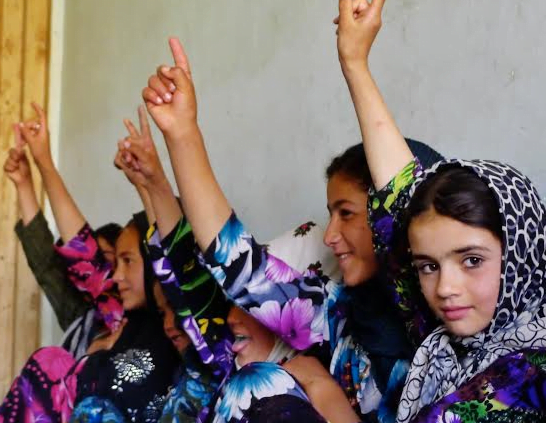

As Afghanistan’s political elites are locked in a heated dispute over last months presidential election results, one critical issue to the entire afghan population is being overlooked.
In the 2013 Survey of the Afghan People by the Asia Foundation, 78 percent of men and 90 percent of women said that they somewhat or strongly agree that men and women should be provided with equal educational opportunities. This is a large portion of the population, but even now only 37 per cent of school students are girls. This seems like a big improvement given in 2000, only a few hundred girls went to underground schools, but the reality remains that receiving schooling beyond third grade remains a dream for the majority of Afghan women and girls.
According to reports by the Afghan Ministry of Education and Child Info only 9.2% of Afghan girls make it to secondary school compared to a still-low 28% for boys. In fact, even in the Survey of the Afghan People, 76 percent of the women interviewed had no education at all. If the majority of Afghan people, 83% according to Asia Foundation, agree that women should have equal access to education, why are so few girls attending and graduating schools?
When I visited a few schools in Faryab in northern Afghanistan I received one of the answers.


While working as a freelance reporter for Save the Children International, I visited a girl’s school in the rural district of Belcheragh. The school building was located on top of a little hill and modest. Save the Children had supported the building of the school so it seemed like one of the more well-off schools in the region. In fact, this was one of the first schools I had gone to that didn’t have ruins in rural areas in Faryab. Despite having a building, a group of girls were sitting over a plastic carpet on a porch outside the building due to lack of space. The vast majority of the students at the school were from the uzbek ethnic group and wearing traditional flowery scarves. Very few of them were wearing the black dress and white scarf uniform designated for female students in Afghanistan. I was first directed towards the teacher’s room to conduct interviews. The headmaster of the school was Mohammad Omar, a white-bearded man who spoke passionately about women’s education and its importance. Also the village’s head (Arbab) told me that people in his village were very supportive of women’s education and there are only a few families that don’t send their younger daughters to school, however because of lack of teachers, the school only goes up to sixth grade. Mohammad Omar’s resources are stretched thin. In addition to teaching several classes and directing the teachers, he assists the parent-teacher association and gives religious sermons in the village.
Faryab is also one of the provinces with an extreme shortage of teachers. Many of the teachers I met at this school were students themselves. Maaria, a seventeen year old sixth grade student who was pregnant with her first child, taught the third grade. Another teacher, Rukhshana was transferred from her home city of Maimana to the village because of the lack of teachers. She says that most families at her new home village are very supportive. “My husband and my son are always beside me. They both volunteer at the school and my husband is part of the PTA.” Even so, with a teacher from Maimana and volunteers, several of the classes I visited did not have teachers. The few teachers circled around the school to teach twenty to thirty minutes in every class. Maaria told me that while students spend about five to six hours in school every day, they usually receive only about one hour of teaching from a teacher. The rest of the time is spent idly or doing homework.
The school in Belcheragh is not the only one with a shortage of teachers. Another school in Qaisaar area has only two female teachers and a considerably lower number of female students. A teacher and religious cleric in Gorziban told me that the biggest problem they had for girls was lack of female teachers. People were supportive of women’s education. “Recently, there has been a mullah, cleric, who moved here from Pakistan, who dissuades people from sending their girls to schools, but no one pays attention to him. They listen to me,” he said, but girls couldn’t continue education because there is a shortage of teachers to teach higher grades. This is a cycle that repeats itself. Parents are reluctant to send their daughters to schools with male-only teachers. Girls don’t graduate high school so they don’t become teachers and the shortage of teachers continues.


Today, women account for 30 percent of the teachers in the country. According to the Central Statistics Organization of Afghanistan, Faryab has 7,000 teachers and only one third of them are women. The government is aware of the shortage of teachers. The program that gives teachers like Rukhshana incentives to move to rural areas is replicated in many parts of the country. But this alone is not able to fight the scarcity of teachers in schools, especially given only 24 percent of teachers in Afghanistan are qualified according to the law. Since 2001, many organizations including UNICEF, Save the Children, and Canadian Women for Women in Afghanistan have worked tirelessly to increase the number of female teachers. However, with less than 10% of girls graduating high school largely due to lack of female teachers, Afghanistan has a long way to go to ensure a sufficient number of female teachers and increased education for girls.
